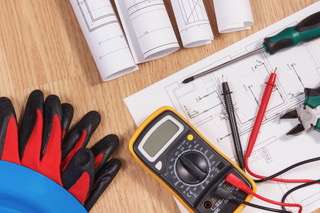
In this, the seventh in a series regarding the importance of safety in the workplace, we discuss the importance of working safely around electricity.
Electricity is such a common part of life that it is all too easy to take for granted and to forget the dangers associated with its use. It is too often the lack of respect for and recognition of the potential dangers of electricity results in a high number of electrocutions in San Antonio, Bexar County, the state of Texas, and beyond. Electric shocks severe enough to kill occur when electric current travels through the body, especially near the heart. And almost all are preventable.
The Most Common Injuries Related to Electrocution
The most common injuries that can be caused when an electric shock flows through a worker’s body:
- Severe, unrelenting pain;
- Significant damage to nerves, muscles, or tissues;
- Internal bleeding;
- A loss of muscle control and coordination; and
- Cardiac arrest.
The first thing everyone should know when working in a workplace where electricity flows freely is that electricity will always flow along the path of least resistance. That is one reason the human body is such a great conductor. Due to our high water and electrolyte content under normal circumstances, electricity flows through the average human as easily as it flows through copper wire. That is why any of the following can lead to electrocution and should be avoided at all costs:
- Coming in contact with wires that are not properly insulated
- Coming in direct contact with electrical conductors, like power wires
- Touching an electrical appliance with wet hands or while standing in water.
Electric current can cause major injuries as it flows through the body, including major burns, either internal or external. When a worker comes in contact with equipment that has been overloaded or overheated, they can also suffer the same sort of thermal burns as those caused by c0ntact with fire. Also, overloaded equipment or electrical circuits can lead to fire and/or explosion, especially in a workplace in which explosive or flammable materials are being stored.
Following Regulations Can Prevent Electrical Injury
The Code of Federal Regulations (CFR) for general industry contains a comprehensive set of electrical safety regulations involving the design of electrical installations. These are located at 29 CFR 1910.301-399. This comprehensive series of regulations are detailed in the Electrical Safety-Related Work Practices Standards (29 CFR 1910.331-360). These regulations limit certain tasks to “qualified” employees, which is always a good idea when working around electricity. The regulations define “qualified” as “those persons having training in avoiding the electrical hazards of working in or near exposed energized parts.” Once again, training is a key component to working around electricity safely. Any qualified employees must be able to distinguish exposed live electrical parts and their nominal voltage, as well as the clearance distances and corresponding voltages to which they will be exposed.
Workers who are not “qualified” must maintain a minimum distance of ten feet from any unguarded electrical equipment. At the same time, all vehicles and mechanical equipment must maintain this as a minimum distance.
It is always necessary that every employer create a safe work environment for everyone, and that includes making sure that all workers implement strong safety procedures, including safe work practices. They should also be able to identify the most common electrical hazards. What follows are procedures that can be implemented to provide an effective way of reducing electrical accidents:
- Workers should always use lockout/tagout procedures to limit exposure to before working on electrical circuits and equipment;
- avoid working around electrical sources when you, your surroundings, tools, or clothing are wet;
- keep a towel or rag handy for drying your hands;
- Employers should always improve hazard recognition for all workers and then emphasize the importance of following proper electrical safety procedures.
- Through constant training, all workers should be able to identify and maintain safe conditions in the workplace to avoid electrical hazards.
- Everyone who is conducting electrical work outdoors should immediately stop work when it begins to rain, even slightly.
- Workplaces should be continually inspected and all potential hazards should be removed;
- All three-pronged extension cords should be left intact and all extension cords of all types should be put away when not in use; they should also not be used in or around walkways, nor should they be used near heat, water or flammable or explosive materials.
Electrocution is Easy to Avoid
Electrocution can be avoided by following certain safety procedures, such as:
- Using only those power tools that meet the National Electric Code (NEC) standards for double-insulated casings or third-wire power cord grounding;
- Using only those hand tools with factory-installed insulated grips.
- Always wearing cotton or fire-resistant clothing that is loose, but not so loose that it can catch on equipment;
- Make sure workers with long hair secure it in a hat or hair net;
- Only use Class B protective hats when working around overhead electrical lines;
- Avoid belts with large metal buckles;
- When wearing a tool belt do not allow tools to hang out of their holders or dangle from the belt and remove the tool belt before working in tight spaces.
Personal protective equipment (PPE) is recommended for all workers, as a way to prevent them from becoming an electrical conductor. This PPE should include nonconductive head, eye and face protection, as well as rubber gloves and clothing, along with rubber-soled footwear. Make sure all PPE fits properly. All PPE should also e cleaned thoroughly and properly stored when not in use. All PPE should also be regularly tested and made functional, based on the standards laid out in 29 CFR 1910.137.
